Special to the Armenian Weekly
Tehmine Martoyan is lecturer at the University of Economy and Law (Yerevan, Armenia). She is also the president of Lazaryan Institute scientific and educational NGO.
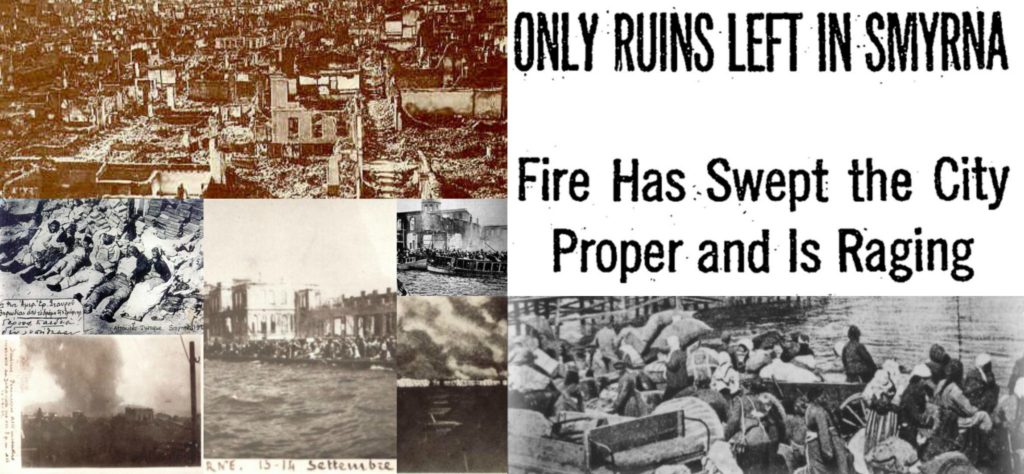
Martoyan is the author of books and articles on the Armenians in Safavid Iran, and she has participated in international conferences and meetings in Armenia and abroad. She also translated into Armenian the book by Theofanis Malkidis titled The Greek Genocide: Thrace, Asia Minor, Pontus.
She has made two films dedicated to the Greek and Armenian populations in Smyrna. Her forthcoming book is titled Psychological and Political Causes of Annihilation of the Armenians and the Greeks in Smyrna.
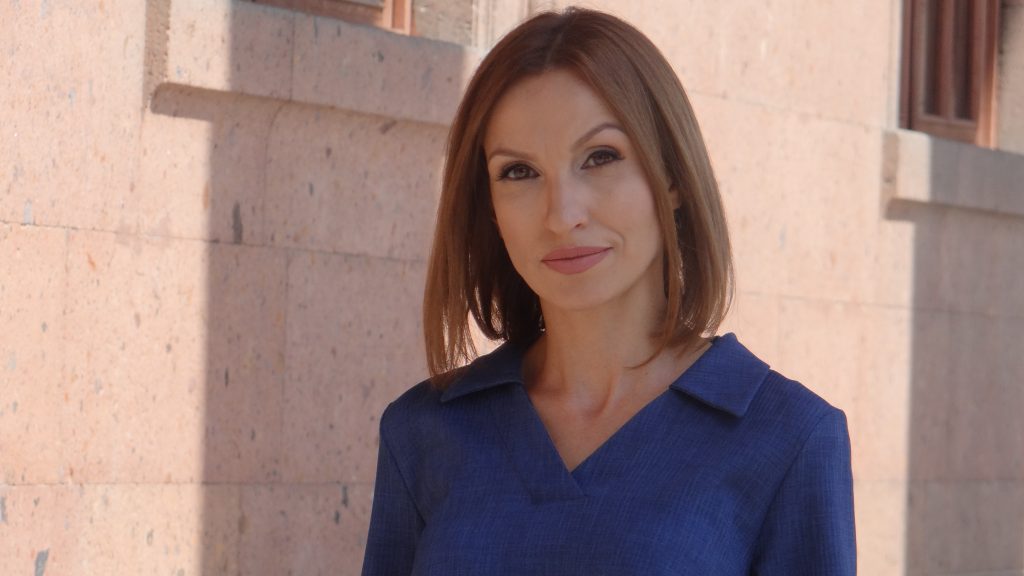
This interview was conducted by email during early Sept. 2017.
***
George Shirinian: You contributed the chapter in Genocide in the Ottoman Empire: Armenians, Assyrians, and Greeks, 1913-1923, titled “The Destruction of Smyrna in 1922: An Armenian and Greek Shared Tragedy.” Amid all the chaos and destruction at that time, why is the fate of this one city noteworthy today?
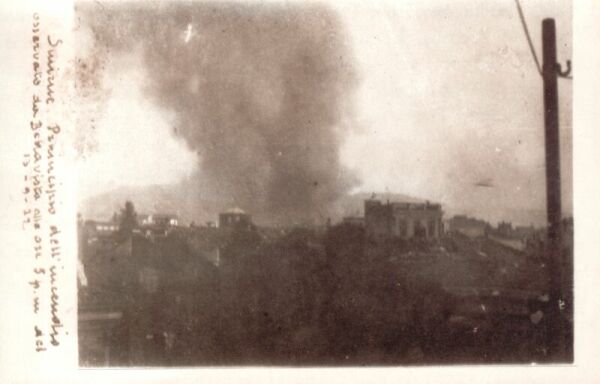
Tehmine Martoyan: First of all, I would like to express gratitude for the opportunity to commemorate with the readers of this journal the 95th anniversary of the destruction of Smyrna, which began on Sept. 13, 1922. Smyrna was a major international commercial center, and it was also known as a tolerant and cultured place, where Christians, Jews, and Muslims had lived together in harmony and prosperity, before the advent of extreme Turkish nationalism.
The Allied Powers suspected Ataturk was going to take reprisals on the city for the conduct of the Greek army during the Greco-Turkish war, and warned him against doing so, but he ignored their warning and got away with it. It was an unnecessary act of wanton destruction that affected only the Christian sections of the city. What happened is very well documented, by eyewitness accounts, photographs, and even video.

The extermination of the Armenian and Greek people of Smyrna and the destruction of the Christian districts of the city made a great impression on contemporaries and continues to attract the attention of researchers today. Entire books are still being written about it.
G.S.: Explain briefly what happened.
T.M.: One author has described the event this way: “What happened over the two weeks that followed must surely rank as one of the most compelling human dramas of the twentieth century. Innocent civilians—men, women, and children from scores of different nationalities—were caught up in a humanitarian disaster on a scale that the world had never before seen.” The Armenians and the Greeks of Smyrna were systematically robbed, murdered, and abducted.
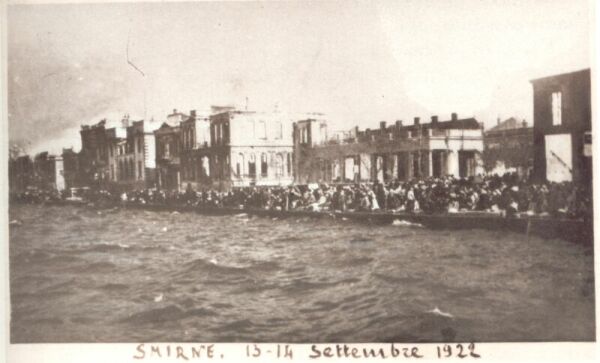
According to the account of Edward Bierstadt—secretary for Near East Relief at the time—around 100,000 people fell victim to the slaughter, and 160,000 were driven away to the farthest parts of Turkey. More than 50,000 houses, 24 churches, and 28 schools, banks, consulates, and hospitals were burned. Turkish soldiers deliberately led the fire down the Greek and European sections of Smyrna by soaking the streets with petroleum or other highly flammable matter.
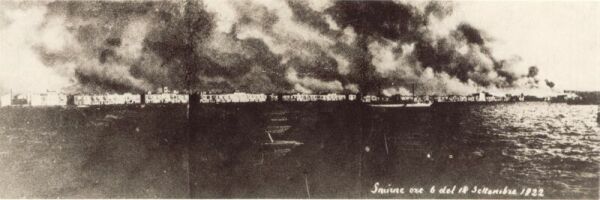
The people were massed along the quay, and with the fire and intense heat behind them; they had nowhere to go but jump into the Mediterranean. There were ships from several countries just outside the harbor, but most had orders not to intervene. Greek ships took refugees to the island of Mytilene and elsewhere, and a Japanese ship was noteworthy for joining the effort from the start, rescuing survivors from the sea.
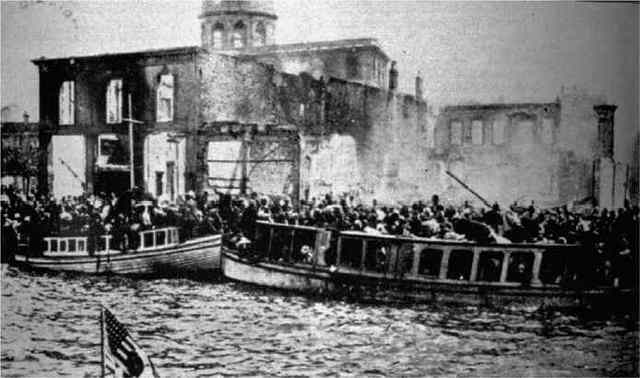
The American navy helped only when the courageous Asa Jennings, a devout minister from upstate New York who had only recently arrived to take up duties as secretary to the local YMCA, rowed out to them and personally demanded that they rescue survivors. He was assisted by an equally courageous and strong-willed naval officer, Lt. Commander Halsey Powell. Together, they helped rescue almost a million refugees.
So, beyond the story of the destruction of the city and its non-Muslim population, there is the story of courageous rescuers who defied orders not to intervene.
G.S.: Why did Ataturk destroy this jewel of a city?
T.M.: To a certain extent it was to punish the Greeks for the Greco-Turkish War, even though the Smyrniotes were Ottoman citizens. But Smyrna was also a symbol of Christian prosperity, a major center of European trade, and an example peaceful coexistence between Christians and Muslims—all things the new Turkish nationalist movement was vehemently against. Ataturk even declared that neither American colleges nor any Christian institutions would operate in Smyrna in future. He wanted to build a new “Turkey for the Turks” out of the ashes of the Ottoman Empire.

G.S.: Is there any parallel in history for such a destruction of a single city?
T.M.: The massacre in the Chinese city of Nanking (Nanjing) by the Japanese in 1937-38 comes to mind. It is interesting to note that the International Criminal Tribunal for the Former Yugoslavia ruled that the murder of some 8,000 Muslim Bosnians in Srebrenica in 1995 was “genocidal.” One could say the same for the murder of 100,000 Armenians and Greeks of Smyrna.
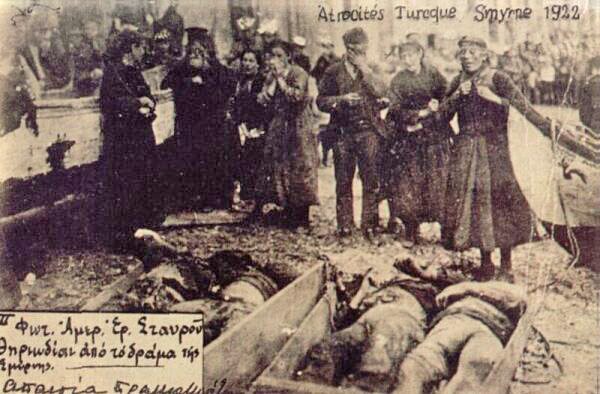
G.S.: You mentioned that this history is particularly well documented. Are new sources still coming to light?
It is true that this history is particularly well documented, and there are new sources still coming to light. I am now researching the entire press of the period at the National Archives of Armenia and Fundamental library of the National Academy of Sciences of the Republic of Armenia. I can also add that I had the opportunity to incorporate in my chapter a previously unpublished letter of the American eyewitness, Bertha Morley, from the Zoryan Institute archives.
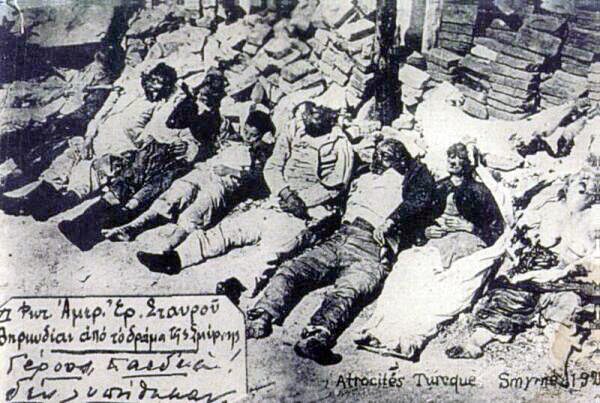
G.S.: You have done extensive work on the Greek Genocide. Why do you, as an Armenian historian, devote so much attention to the Greek experience?
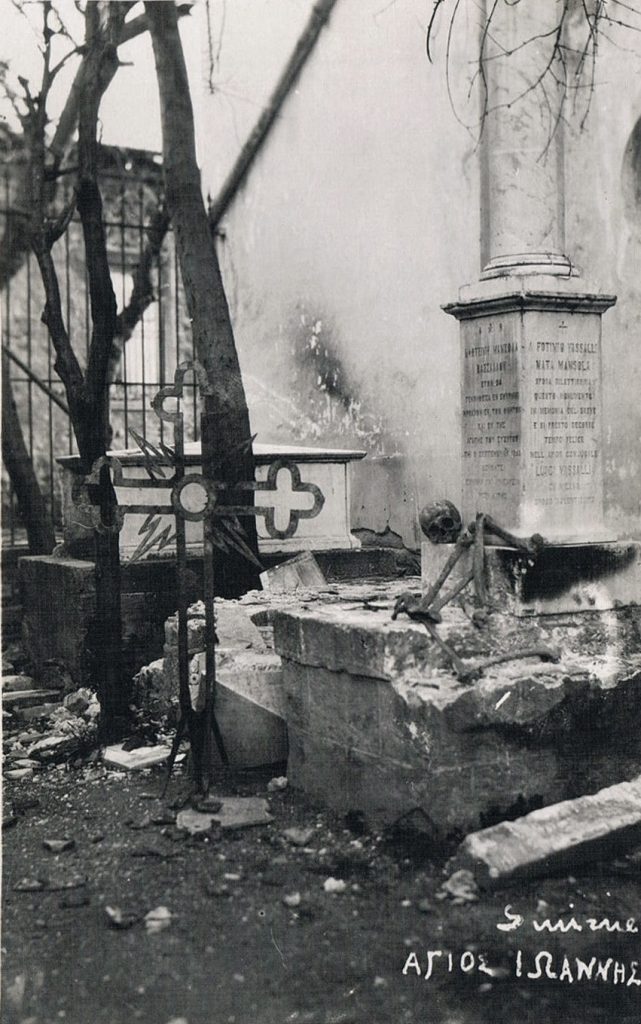
T.M.: Historical-cultural ties between the Armenians and the Greeks from ancient times are evident in their religion, culture, traditions, lifestyle, legends, etc. These two nations have always had strong ties, both emotionally and historically, due to religious and cultural roots.
Studying the experiences of these two peoples in parallel, I use content analysis as a research method to show how both the Armenians and the Greeks suffered from genocide that was planned and committed by the same state. As the subtitle of my chapter states, unfortunately the Armenians and Greeks have a shared tragedy.


Our mother had a Turkish bullet in her hand at that time which stayed with her till the day she died in 1967. Her mother was killed there also. The battleship U.S.Arizona was in the harbor,but as far as I know they did not help. Our family got to Greece and stayed there for a long time.
Dear Mike Manoogian,
Thank you for your response. Thank you for your family story.
Send me an e-mail, please.
Best regards,
Tehmine Martoyan
My father Sarkis aka “Deli Sarkis” survived the holocaust that was the destruction of the beautiful city of Smyrna. When I interviewed him for the book I wrote about his life: “Deli Sarkis: The Scars He Carried” and asked him what was worse for him the deportation from the Armenian village of Keramet (Bursa Province, located on the banks of Lake Iznik or the burning of Smyrna he said without a pause the burning of Smyrna. He continued with if you can imagine a hell on earth that was the city when the troops of Kemal Ataturk came in and laid waste to the Christian sections. Horrible beyond belief. The Turks will never ever assume responsibility for their actions always blaming their atrocities on someone else. Thank you for your research and your films. People need to know.
Ellen
Dear Ellen Chesut,
Thank you for your story. I am interested in your book “Deli Sarkis: The Scars He Carried”.
Send me an e-mail, please.
Regards,
Tehmine Martoyan
From my great-great – grandfather Ghazer Chilinger’s line, martyrs killed in Smyrna:
The four sons with names unknown of his grand-daughter, their mother Iskoohi Ghazerian Tutunjian, all 4 killed in Smyrna;
For Gazaros Tavitian, another descendant, killed in Smyrna.
Dear jda,
Thank you for your family story.
Please, send me an e-mail.
Kind wishes,
Tehmine Martoyan
Thank you for your research & publication. As my maternal grandfather grew up in Smyrna, & his parents spent over 30 years there, I always felt a camaraderie with Greeks, and any I met in the US certainly knew of the Genocide. A couple years ago, a letter written by my grandfather, Dr.Levon Beshgetoor(ian), was translated. It was from the early 1920s. He had come to the US a few years earlier but knew of the problems rising up again in Turkey, notably Smyrna. He was writing to his father, Professor Garabed Beshgetoorian, still in Smyrna, cautioning him to leave everything and come to the US. Fortunately, my great-grandfather did leave Smyrna, spending the last 20 yrs of his productive life in the metro-Detroit area. I have on my wall a framed print of the Smyrna Harbor, dated 1678. Visiting Izmir in 1970 to walk along the harbor perhaps as my grandparents did, was truly a special feeling. Any historic information about Smyrna, including its brutal destruction in 1922 is as valued to me as that of the interior towns of my other ancestors. Again, thank you for the information and graphic photos from that time.
Dear Joan Kasabach(ian) Swain,
Thank you for a nice family story.
Send me an e-mail, please.
Kind wishes,
Tehmine Martoyan
Just today googling my maternal great-grandfather, coming upon your article (again) but not having seeing your 2+ yr old request for my em…..this is my first chance to reply….for whatever reason you wanted to be in touch in 5/2020.
350,000 people were saved from Smyrna in 1922. That was 25,000 Armenians, 25,000 Jews, and 300,000 Greeks. Do you know who was responsible for the rescue? I have the records, if you are interested. I do not believe Armenians know.
Dear Roger Jennings,
Thank you for your information.
Send me an e-mail, please.
Best regards,
Tehmine Martoyan
My father, Gregoire Gurgian, and family escaped the day the burning started. 50+ relatives were killed. They went to France. He told me about all the death and destruction.
Dear Ralph Gurgian,
Thank you for your family story.
Please send me an e-mail.
Best wishes,
Tehmine Martoyan
Hello,
my name is Didier MAZMANIAN, great-grandson of Armenians who fled the genocide to France. I would like to contact George SHIRINIAN. Could you tell me how to contact him?
I would like to ask him questions about the Armenian genocide.
Thank you for your help.
Hello,
Dear Didier MAZMANIAN,
Thank you for your response.
I will write you via email.
Regards,
Tehmine Martoyan
Dear Director,
I’m a local history writer from Odemis/SMYRNA (Turkey). At my city Odemis, there were a wealty family Davidians (or Tavitians)at the end of 19th century and beginning of 20th century. I have some information about this family, but not able to reach fruitful information about them. Most probably, they immigrate to USA, around 1915. One of the son of the family is Mr. Seroppe, who was a lawyer.
If someone can tell someting about this family, I will be grateful. My aim is to uncover the past days of Odemis life.
Wit best wishes.
Bekir
Dear Bekir Keskin,
Thank you for your response.
I will send a mail to you.
Best regards,
Tehmine
Not sure if there is a list of survivors from this horrific event. If anyone could assist me or point me in the right direction I would really appreciate that. Thank you!
My paternal grandfather Ioannis Ioannides escaped from Smyrna with his mother, Maria Grivas Ioannou, and sisters Theodora, Vasilia, Georgia in 1920 to the mainland of Greece. Ioannis, with Maria and Vasilia, boarded on SS Pannonia for New York and landed on August 1920. Theodora and Georgia went to live in Pireaus. Another sister, Chyrsanthe was already in Springfield, MA. Before his escape, his father Dimitrios Ioannou was stabbed by the Turks. Dimitrios died in Ioannis’ arms when Ioannis was about 9 or 10 years old. That memory left him with rage about how the Turks treated the civilians. I want to know the location where he grew up in Smyrna. Ioannis’ parents were from Smyrna, not sure about their parents. I am determined to find more cousins! Thank you for the powerful article. Keep researching!
Thank you for your research. My name is Siran Abeshyan from US. My maternal great parents were from Smyrna. They were prominent family of architects of 4 brothers. I know only two of the brothers names, Aram Alajajian who was my great grand father and Haig Alajajian. Aram had two daughters and a son. All 4 brothers were killed. The 2 daughters and the son were saved. The older daughter Siran Alajajian (my grandmother) end up in Greece. The sibling end up in Lebonan. In 1930’s the youngest sister Mary came to US. Unfortunately my grandmother died before I was born. I don’t have too much information on the family, but I have an original family photo of the brothers and my Grandmothers family portrait where she seems to be 1 year old. I’m not sure if the escaped from the fires or were there any massacres of Armenians and Greeks in Smyrna prior to the fires and destruction of Smyrna. Furtunetly I met my grandmothers sister Mary Ouzunian(married name) back in 1990’s who was a few years old. She had a hard time talking about it. She described that day as a HELL on earth. She remembered her parents were murdered and she lost her sister(my grandmother). What is not sure is weather my family was mudered during the fires or before. Here is why I am questioning that my grandmother was born around 1901 or 1902. According to my mom she was in her early teens when her rescuers covered her face with mod and dressed her in boys clothing in order to smaller her. If she was in her early teens than she must of rescued before 1922: Then this makes me conclude that there may have been massacres in Smyrna prior to 1922. Unless my information is not accurate. I would really appreciate if you could shed some light on my confusion. Furthermore, I am very much interested on the list of (if any) of Armenians living in Smyrna prior to 1922. Especially of Alajajian family including Magakian family(maternal grand father) would be so grateful if anybody can shed some light in search of my family’s history.